New hope for farting Frenchies and burping bulldogs

“One of the most common things I hear from owners of brachycephalic dogs, like Frenchies or bulldogs, is that it’s normal for them to spit up all the time, or they’re just always noisy—that it’s normal for the breed,” said Aida Vientós-Plotts, DVM, PhD, DACVIM, assistant professor of small animal internal medicine at University of Missouri.
“But typical is not normal,” she adds. “Just because those patients commonly have those issues, it doesn’t mean it’s normal—and it does not mean they have to live with it, or that there’s nothing we can do about it.”
At the University of Missouri Veterinary Health Center’s BREATHE Clinic, Vientós-Plotts and her colleagues are doing their part to help more pets (and their people) breathe easy by diagnosing and treating aerodigestive disorders, all while helping pet parents and veterinary professionals better understand the close connection between the respiratory and digestive tracts.
A need for BREATHE
BREATHE is an acronym for Bringing Respiration & Aerodigestion Toward Health, and the clinic, founded in October 2022, was the brainchild of Vientós-Plotts and her mentor, Carol Reinero, DVM, PhD, DACVIM, professor of small animal internal medicine, who founded BREATHE with the goal of focusing on respiratory and aerodigestive cases—something Vientós-Plotts believes was much needed.
“Respiratory medicine in general just doesn't get a lot of love,” Vientós-Plotts said.
Often, she said, patients are sick with, say, a chronic cough; they get antibiotics or steroids from their veterinarian, and then, if that doesn’t work, some clients or referring veterinarians think they’re out of options. “Some of my patients have, seen four, five, six, seven rounds of antibiotics, they’ve seen steroids, and they just keep doing radiographs after radiographs.”
“I look at that and think, ‘Oh my gosh, you’re spending, like, $10,000, but you’re just trying to put Band-aids on whatever the problem is—and you still haven’t figured out the actual problem.”
At the University of Missouri, the BREATHE Clinic is uniquely positioned to do those diagnostics. In fact, Vientós-Plotts doesn’t think there’s any other place in the country that can do quite what they do in terms of their imaging equipment.
“We have state of the art imaging. We have the ability to do free-standing videofluoroscopic swallow studies; and our CT is a 640-slice CT that allows us to do 3D and 4D imaging and reconstructions,” she said.
“This equipment, in combination with our expertise, allows us to provide very thorough and comprehensive evaluations to our patients—so it really is a natural move for us to offer this as a service.”
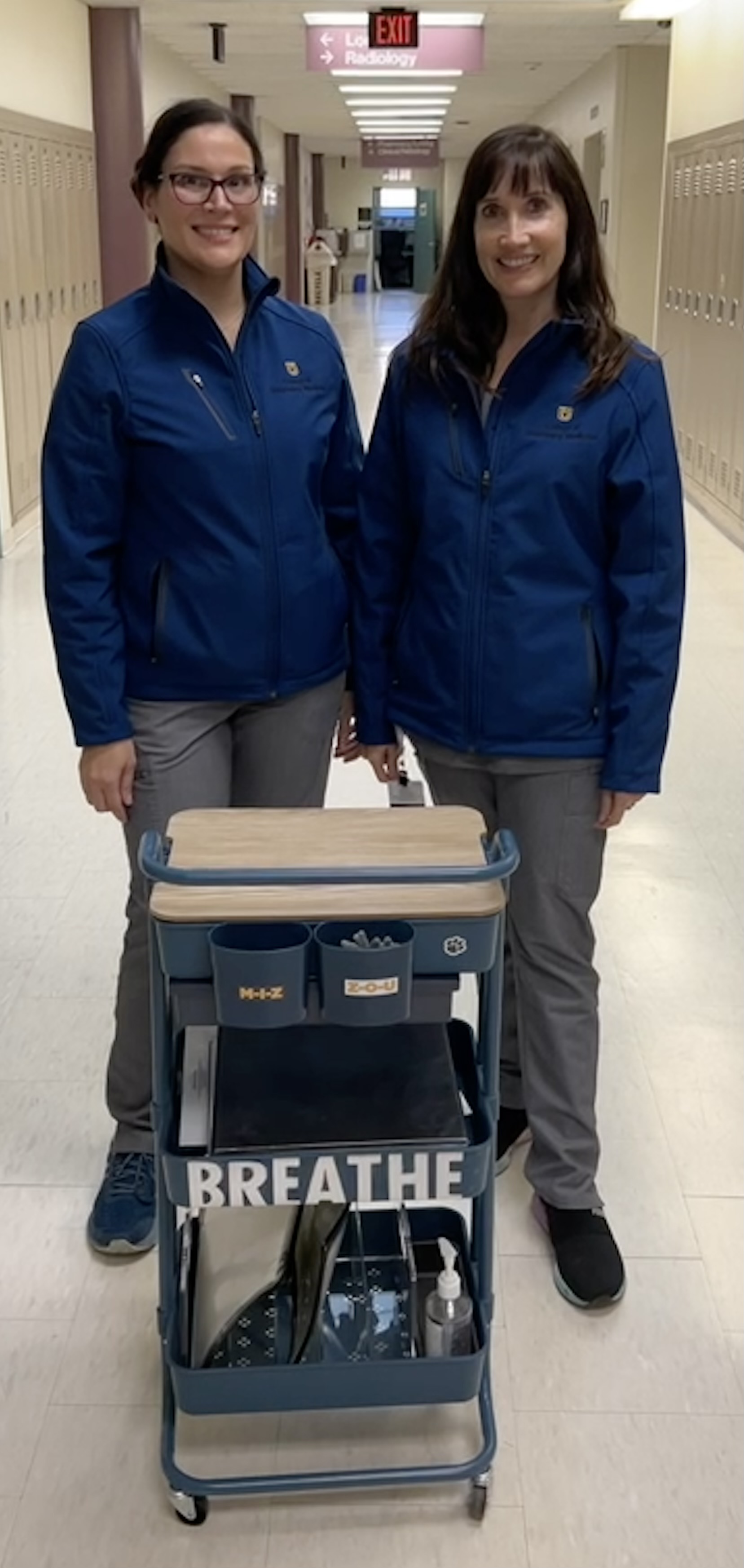
Drs. Aida Vientós-Plotts (left) and Carol Reinero (right), co-founders and co-directors of the BREATHE Clinic at the University of Missouri.
The respiratory–digestive connection
Dogs (and cats, although they’re far outnumbered) typically come to BREATHE for respiratory signs or diseases (like chronic cough, exercise intolerance, abnormal noises when breathing, or brachycephalic obstructive airway syndrome—which accounts for over a quarter of the patients at BREATHE), or digestive disorders (like megaesophagus, dysphagia, or regurgitation).
“You really can’t talk about the respiratory tract in isolation,” Vientós-Plotts explained. “You have to talk about it from the aerodigestive perspective.”
For example, she said, if you have a patient with a chronic cough—for whatever reason—that patient is more likely going to have gastroesophageal reflux, because the changes in pressure between the thorax and the abdomen increases the risk for reflux.
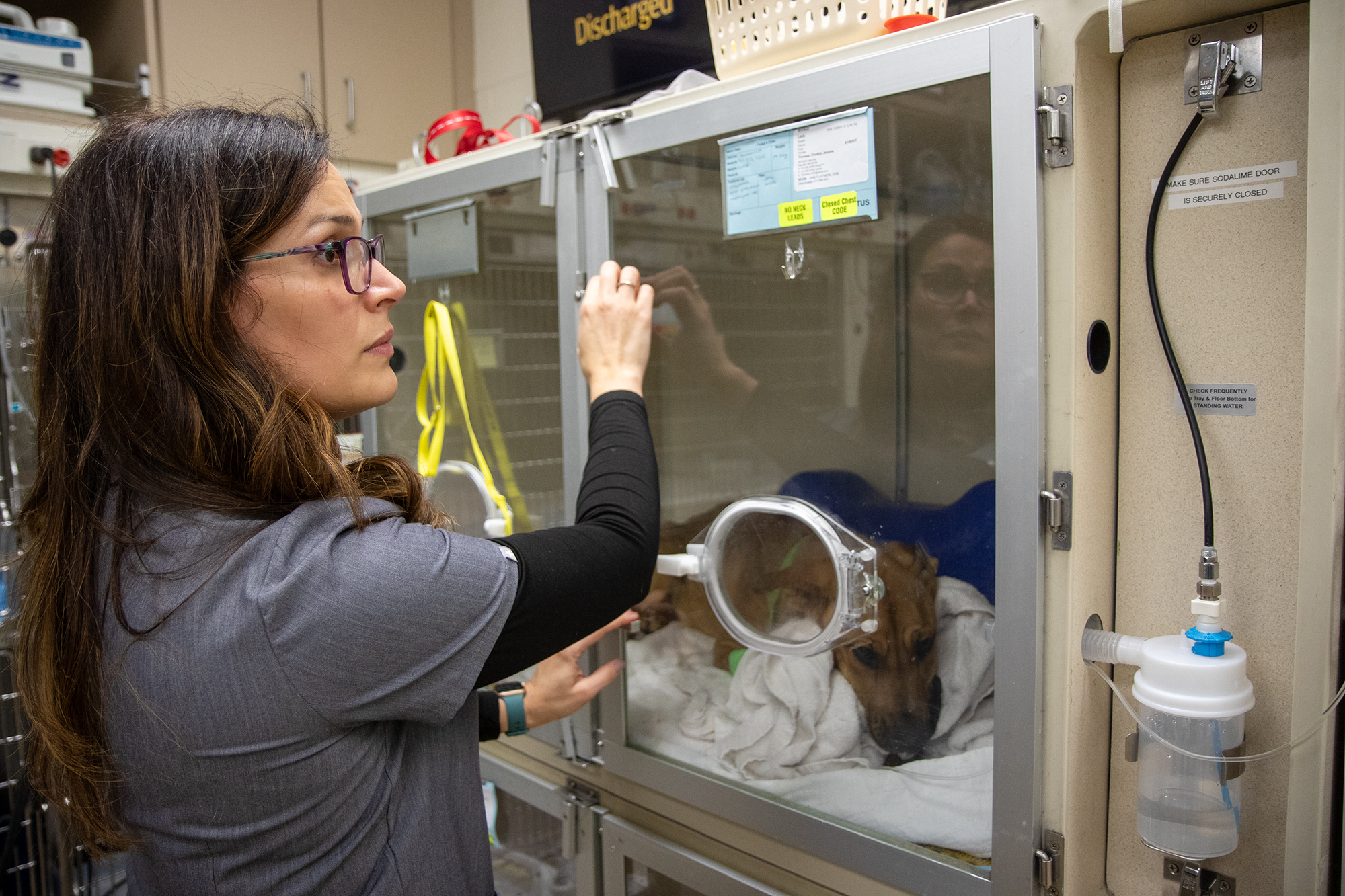
Dr. Vientós-Plotts with patient in oxygen kennel. The ICU at the University of Missouri is well equipped with several ways to provide oxygen supplementation including oxygen kennels, and high-flow oxygen machines for those patients who may need it before, during or after their diagnostics.
Swallow studies for patients with chronic cough
With that in mind, nearly all cases of dogs with primary respiratory complaints such as chronic cough that come into BREATHE get a comprehensive diagnostic work up that includes a swallow study. The group recently published a study that showed 81% of dogs that present for just cough have at least one abnormality on a swallow study.
“Whether that’s a chicken or the egg, I don’t know,” Vientós-Plotts said. “I don’t know if the GI disease is contributing to the respiratory disease, or if it’s primary respiratory that’s increasing the risk for reflux and making that a vicious cycle. But 81%? That’s a huge number.”
Now, a general practitioner might not be able to do a swallow study on every dog with a cough, but Vientós-Plotts urges them to keep in mind that the patient might not necessarily have primary respiratory disease—and there are some fairly basic things GPs and their clients can do that can make a major difference.
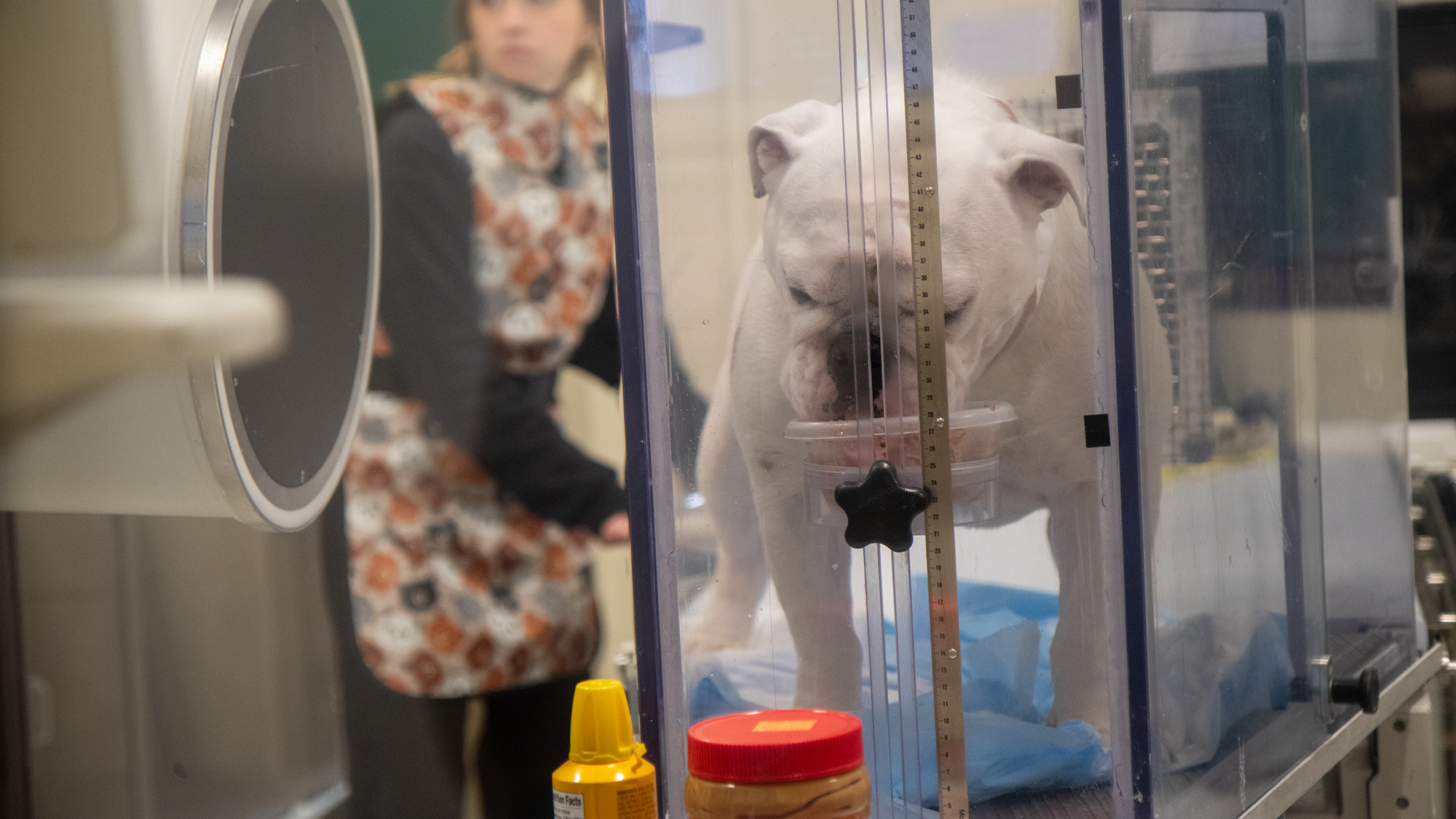
Canine patient undergoing a video fluoroscopic swallow study. The University of Missouri counts with several patented kennels that allows for this study to be performed while patients are eating in a natural position.
What clients and GPs can do
“One of the most important things is to look at their nutrition,” Vientós-Plotts said. Overweight and obese patients, especially obese brachycephalic patients, will have a harder time breathing.
“Obesity also predisposes them to have reflux, so if they already have underlying reflux disease, [their weight] is going to exacerbate that. Weight management alone is something huge they can do for their pets.”
Food management trials have been hugely successful for some of her patients—including some that have come through the BREATHE Clinic as a prerequisite for surgery and been able to alleviate their issues simply by changing their food and improving their body composition.
“The higher the fat [in their food], the more likely they are to have reflux,” Vientós-Plotts said. “So, we try looking at the fat and changing the type of food they’re getting, then giving that a couple of weeks to see how the pet is doing.”
If the patient is still having reflux or regurgitation, she might have them try something like cisapride (a prokinetic that will help their digestive tract keep things moving) or start feeding them smaller meals more frequently to reduce the swallowing of air.
Although she’s had great success with this approach, she acknowledges that it comes with a big challenge in that only one change should be made at a time.
“It requires patience,” she said, “and that’s sometimes hard. You have an owner who’s frustrated and wants to get to the bottom of it.”
Still, for veterinarians who don’t have access to the kinds of diagnostics she has, she believes that going with a management trial like this, changing one thing at a time every couple of weeks, is an excellent way to understand what does or doesn’t work for that pet.
She also noted the importance of catching and treating aerodigestive problems as soon as possible.
“A large proportion of brachycephalic dogs have primary respiratory and primary gastrointestinal diseases which contribute to each other as well as progression,” she said, “so if you identify and address anything that’s providing airway resistance as early as possible—and you keep them at a good body condition score—then you’re hopefully delaying the progression of that disease and helping them live longer.”
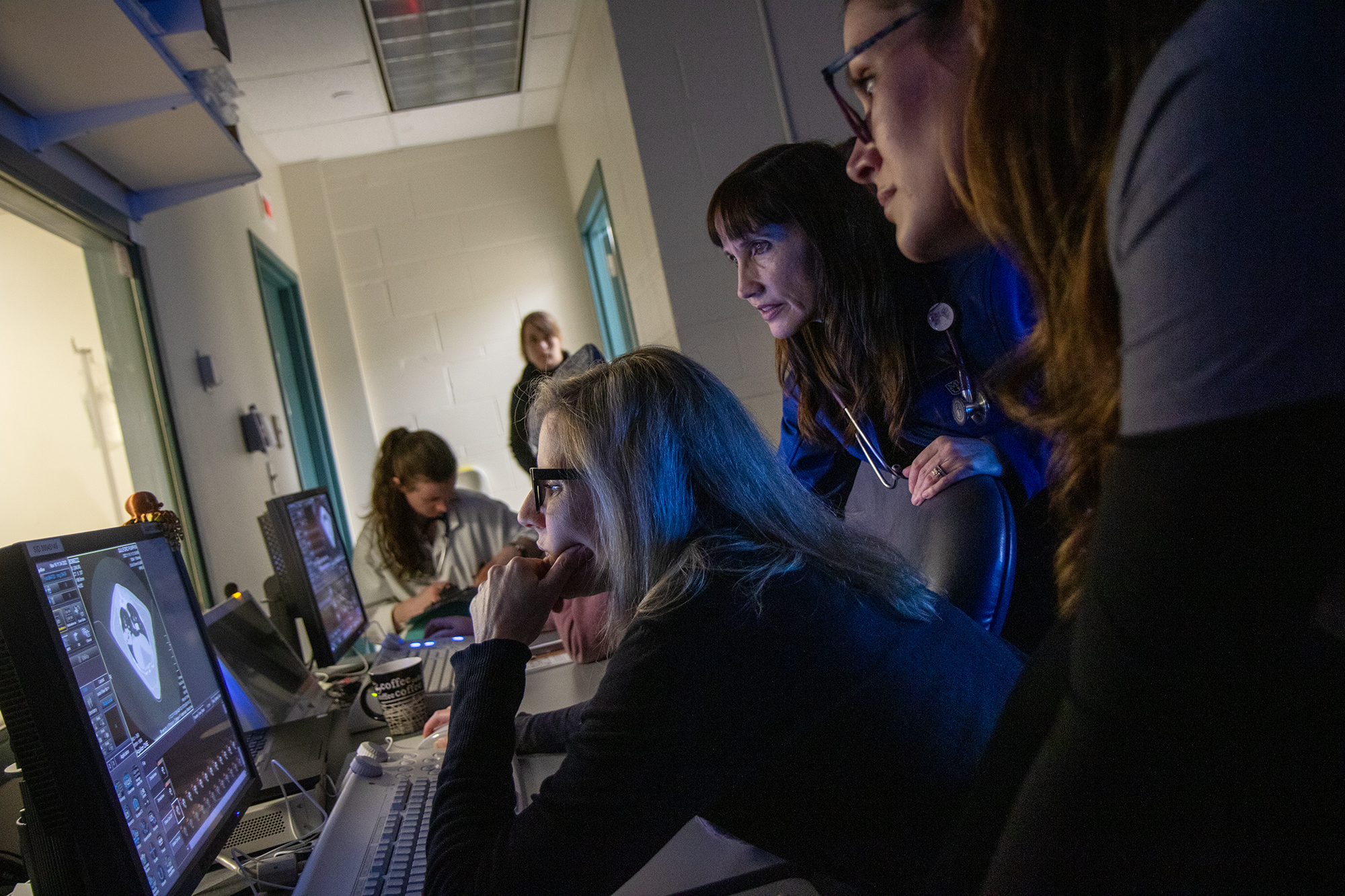
Drs. Isabelle Masseau (board-certified radiologist), Carol Reinero, and Aida Vientós-Plotts evaluating a thoracic CT together. The BREATHE clinic takes a team approach when pursuing comprehensive diagnostic workups on their patients, working very closely with radiologists and surgeons along the way.
Asking the right questions
Clients bringing their pets to BREATHE fill out an extensive questionnaire before they arrive on campus. “That allows us to get more information, not just about their diet, but about their environment, the duration of their clinical signs, and what the owner’s goals are,” Vientós-Plotts said. “It’s really important that we’re on the same page from the minute we walk into the room.”
The responses to the questionnaire allow Vientós-Plotts to continue asking the right questions through diagnostics, which can be daunting to clients who are wary of putting their breathing-challenged dog under anesthesia—but she assures them that, if it's being proposed, it is "likely the right call.”
“I tell owners, ‘I don’t know the answer to a question I haven’t asked yet,’ so if I haven’t done that diagnostic test, I can’t tell you if your pet has cancer, if this is going to impact their length of life, or if there’s an option to fix it,” she said. “So asking the right questions, not just in the history, but also in the form of diagnostics, is the most effective and efficient way of getting you an answer.”
Sometimes, the answer is that there isn’t a clear answer—but even this information is valuable, said Vientós-Plotts, because it gives her what she needs to help the patient onto the right path of treatment.
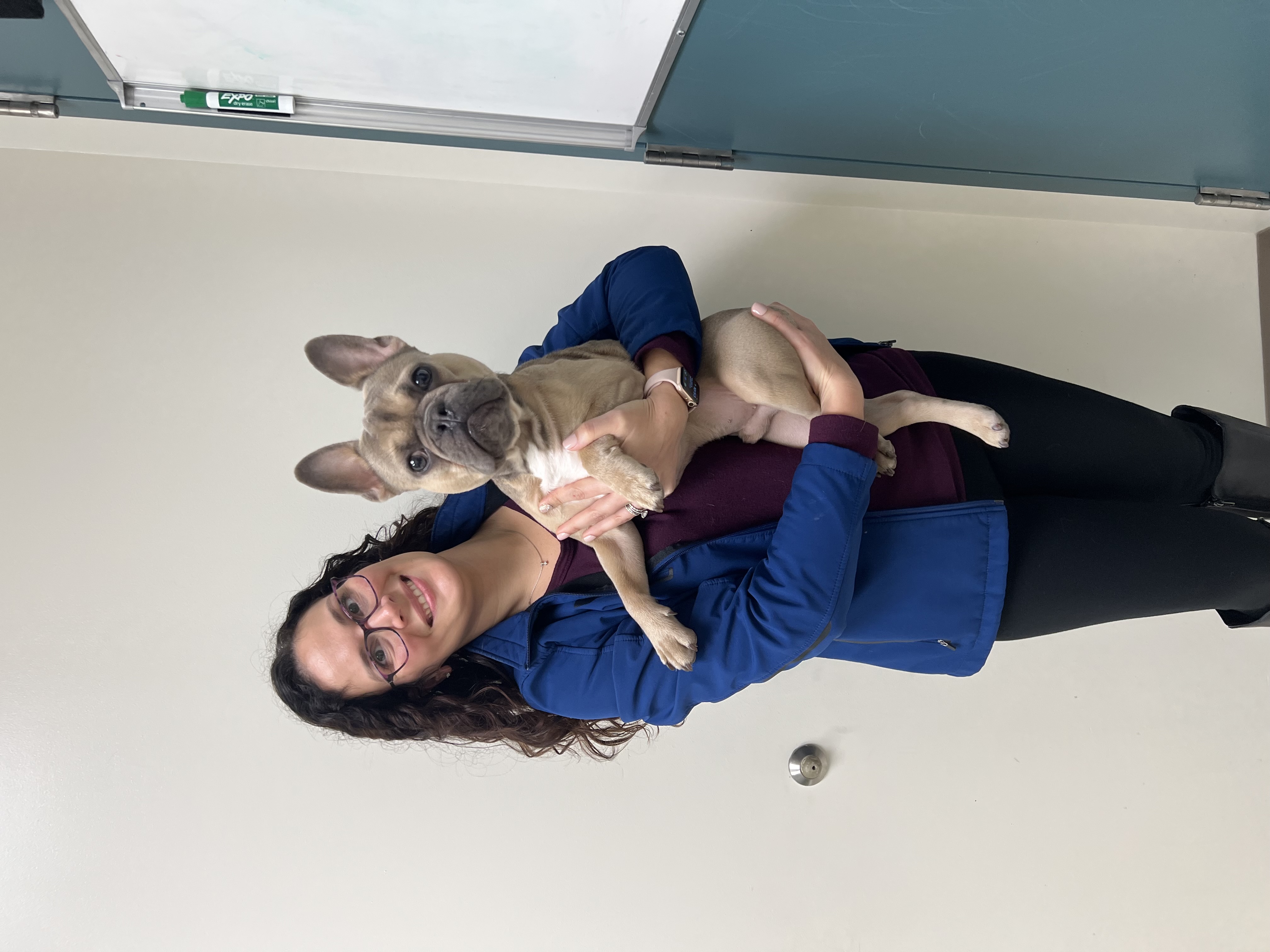
Dr. Vientós-Plotts with one of her many French Bulldog patients at their post-operative appointment.
As an internist, Vientós-Plotts has accepted a hard truth. “I will fix very few things in my patients,” she said, “but we can manage a lot of them. We can make their quality of life better—and that’s usually our goal. What can we do to improve this pet’s quality of life?”
And in improving the pet’s life, she’s discovered another key outcome: “We end up improving the owner’s quality of life, too, because they’re not worried about their pet, they’re able to sleep,” she said. “That’s the feedback I get from a lot of clients. Not only are we helping their pet, but we’re helping them have a better quality of life, too.”
Kristen Green Seymour is AAHA’s Copywriter.
Cover photo credit: © LightFieldStudios E+ via Getty Images Plus. Other photos courtesy of BREATHE Clinic.
Disclaimer: The views expressed, and topics discussed, in any NEWStat column or article are intended to inform, educate, or entertain, and do not represent an official position by the American Animal Hospital Association (AAHA) or its Board of Directors.
NEWStat News Interesting/unusual Client communication Patient care Practice management



